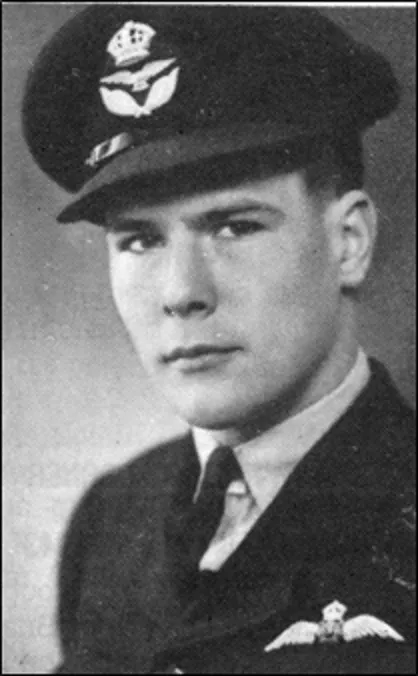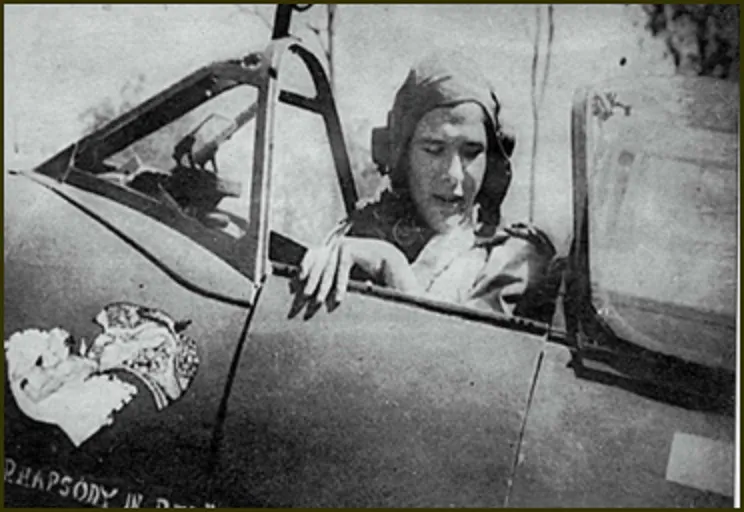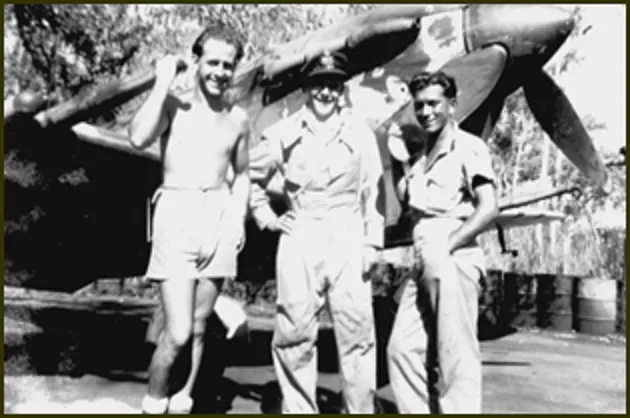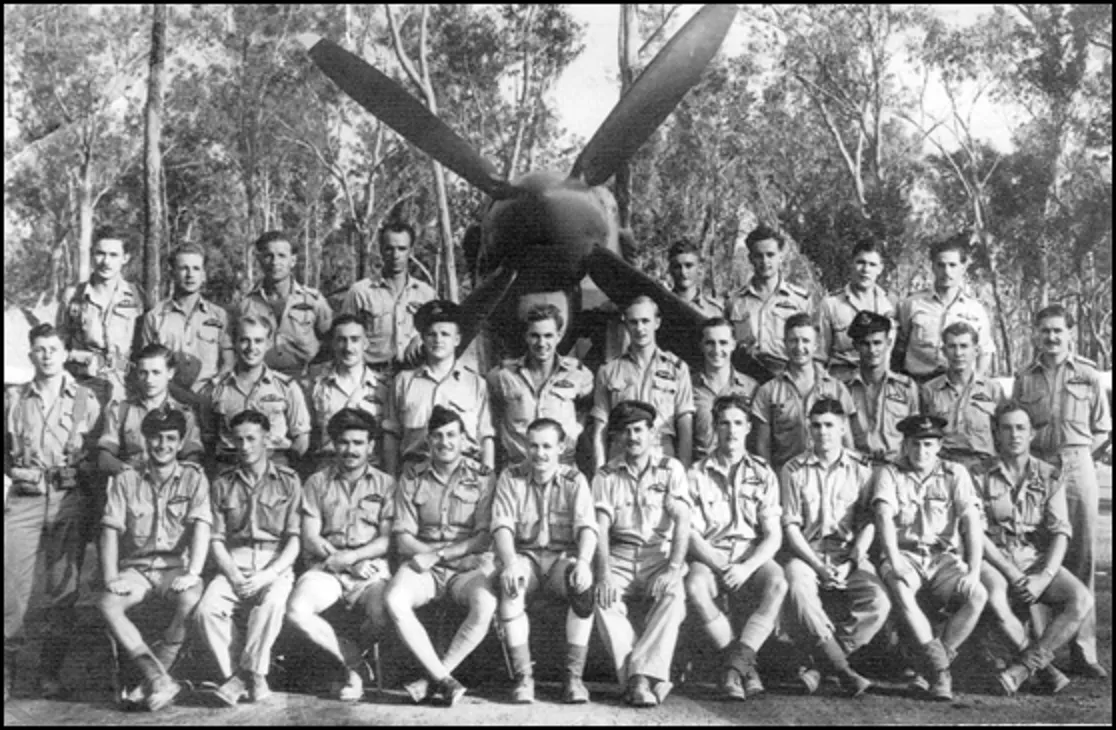FLTLT Joseph Lysle Roberts 432618
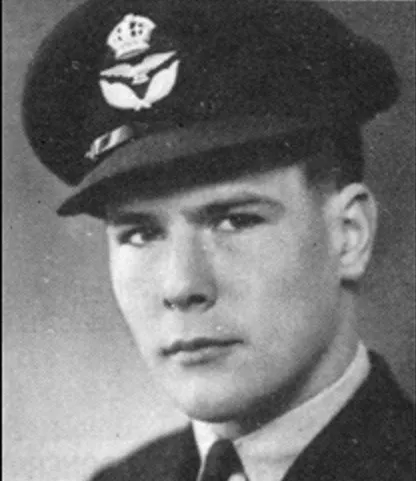


| Squadron/s | 457 SQN 2 OTU |
| Rank On Discharge/Death | Flight Lieutenant (FLTLT) |
| Date of Birth | 27 May 1924 |
| Date of Enlistment | 02 Jan 1943 |
| Date of Death | 29 Oct 2018 |
| Contributing Author/s | GPCAPT Alan Clements and Steve McGregor The Spitfire Association |
Joseph L. Roberts, or as his mates called him, "Lysle" was born 27 May 1924 in Gordon, NSW.
He attended Knox Grammar School where in his final year he was captain of the school, senior cadet under officer and captain of all major sports teams. He was offered a commission in the AIF but refused as his desire was to fly Spitfires.
After leaving Knox Grammar School Lysle joined the RAAF and enlisted on the 02 Jan 1943 and flew as one of the Narrandera No. 8 EFTS trainee pilots on Tiger moths.
After those far off wartime Elementary Flying Training School days, Lysle would go to 5 SFTS Uranquinty outside of Wagga Wagga for his initial and advanced flying training on Wirraways. From there he would be one of the two pilots selected from his course to train on Spitfires at No. 2 “Fighter" Operational Training Unit at Mildura.
It was while there that he would be on the receiving end of the CFI, Wing Commander Clive Caldwell's indignation. The youthful exuberance of this graduating Spitfire pilot had spilled over into a time of celebration. Lysle and another "accomplice in crime" had short sheeted Clive Caldwell's bed!! Their punishment would be either a kick in the backside or relegation to flying Boomerangs!!
The move North to become part of No.457 Squadron RAAF flying Spitfires came with the words of Clive Caldwell ringing in his ears. "You break a "Spit" and you will go south!" Incredibly, on Christmas Day, 1943 Lysle was flying at Darwin under the close scrutiny of SQNLDR K.E. "Skeeter" James. After doing some circuits, he set up for his final landing.
With his MkV Spitfire ZP W now safety on the landing strip, Lysle was about to get a real "sinking" feeling literally. The left wing was dropping, courtesy of a slowly retracting port wheel. However, this young and by now quite concerned Australia pilot was able to keep the aircraft out of harms way until the wing dug in and spun the Spitfire around.
A later investigation would vindicate this "P plater of the air" and he wouldn't be heading south!! Rather, he would become an integral part of No. 457 Squadron's fire service record. Lysle Roberts had certainly come a long way from those early No. 8 EFTS days at Narrandera.
Later in January he was posted to Drysdale mission, the closest air strip to Timor. They were kept reasonably busy as Truscott Airstrip on the Anjo Peninsula was being surveyed and constructed and Japanese observation planes were interested.
He had no sooner arrived back in Darwin than preparations were made for the epic flight through a cyclone to Perth as rumour had circulated that a large Japanese task force was in the area. The next job was "pot shot" protecting an Allied task force refuelling and rearming in Exmouth Gulf.
As Lysle recounts, "The first morning after our arrival at Pot shot I flew number 2 to Alf Glendenning (see left) on dawn patrol. We came out of cloud and below us were 2 aircraft carriers, 4 heavy cruisers, 6 light cruisers and 11 destroyers being refuelled and rearmed. Alf took us a little too close and the next minute we came under attack from anti aircraft fire.
Whether it was serious or for practice, we did not wait to find out. The next they had left but returned 5 days later and having refuelled etc left and the Squadron returned to Darwin. I had Glycol problem and landed on Drysdale strip. Three days later I left solo for Darwin where the Squadron had moved from Livingstone to south end Sattler and were now part of 80 wing not No.1 fighter wing.
We soon received the Mark VIII and were practicing strafing, bombing and night flying, all a new concept from the Spitfire.
I left the 457 Squadron on the 10 Nov 1944 and after leave was posted to 2AD Richmond January 1945 having missed out on the air to air gunnery course at Cressy, Victoria. Peter Bullock joined shortly after".
Peter Bullock (452), Ron Bolton and Lysle (457) and three or four other pilots delivered the first Mustangs to 86 Squadron at Bowle River on 5th August, 1945.
The weather was lousy. Lysle was the last in the landing formation and Ron Bolton was in front of him. Whether he thought he was too close to the aircraft in front or he did not time his approach, Ron Bolton tried to abort and when he opened his throttle, torque took over and he rolled on his back and pranged. The Mustang skidded along the runway on bent prop and armour plate behind his head. Fortunately, he was not killed.
In September, 1945, 2 AD Ferry Flight consisting of Peter Bullock, Lysle, some 54 Squadron pilots and ex-Kittyhawk pilots began delivering Mustangs to Labuan to equip the Squadrons to go to Japan. They were asked to test and then fly Kittyhawks back to the mainland. It was an absolute disaster and only two aircraft ever reached Oakey, piloted by Peter Bullock and Lysle. The boys from Ichabod deserved congratulations on their achievements, but they were lucky to have an escort aircraft and planes they knew which had been well serviced. Ten out of fifteen was a lot better than two out of eighteen or twenty-one and six dead.
Incidentally, rarely with an escort, the preferred route, which was shorter than the one taken by 457 Squadron was Labuan, Wolfe (Zamboanga), Morotai, Biak, Merauke, Higgins, Garbutt (Townsville) and Oakey.
An interesting aside is when Lysle was given the assignment of testing parachutes by fastening them to the aircraft and at altitude release them. Upon testing 40% of the "chutes" malfunctioned. This led him to the determination that if he was ever to have any trouble in his Spitfire then he would rather try and bring his aircraft in for a wheels up landing or such, rather than take to the silk.
Lysle said that, "Our main job then became testing and ferrying new Spitfires and Kittyhawks to New Guinea, Noemfoor and Morotai. Old worn out aircraft were flown back to Australia and dumped in paddocks around Oakey. A typically useless RAAF order".
In early August Peter Bullock and Lysle decided to join the RW fleet air-arm. They flew to Melbourne and after extensive interviews and meetings they were accepted into the new service. However, a week later the war was over. They then resigned from the fleet air-arm and returned to the RAAF this time flying Mustangs, mainly to Labuan an island off North West Borneo. The task was again being ordered to fly clapped out old Kittyhawks back to Australia. One must remember that the war was over by this time but out of 20-30 odd Kittyhawks to leave Labuan, 2 reached Oakey and 6 pilots were killed. A dreadful situation which should not have happened, their lives were just thrown away.
The only other interlude was on the 28 October 1945 Peter Bullock and Lysle flew Mustangs from Richmond to Laverton for a duration of 1¾ Hours. Later a flight of 1½ hours over Melbourne for victory parade then a little more gas Laverton to Richmond 1½ hours.
Lysle was to end his flying days at the ripe old age of 22 and was discharged from 2 Aircraft Depot on the 05 Feb 1946.
He was to return to civilian life at a very young age and joined the family business Fairfax and Roberts Jewellers (established 1874) in King Street, Sydney, a far cry from speeding at over 300 mph over Australia and SE Asia in fighter aircraft.
Lysle has served on the Executive Committee of the Spitfire Association for many years and was elected as President in 2007.
